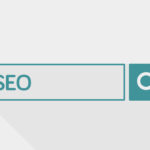How to Write an Effective Sales Pitch for Office Supplies
Does your mind go blank when you begin writing a sales letter? These tips could help you write a more effective pitch:
Put yourself in your customer’s shoes
This is the most important aspect of a good sales letter, but it’s often overlooked. Imagine yourself as the reader of your letter, and write what the customer wants to know – not what you want to say. You have limited space to attract a customer; their main concern is fulfilling his or her needs and desires, not increasing the balance in your bank account.
Show them that you know who they are
Remember to quote their name, and reference their job title, it will make them feel like you’re “on board”, and not treating them as prospect No.1277. This is why lots of sales letters fall short; they’re not about the individual at all. Take the time to do your research and tailor the letter.
Make it easy to read
Sales letters that appear too complicated are quickly discarded. To help avoid this: write in a conversational style, just as you would normally speak, use short sentences, this will naturally happen once you start writing more informally. Short paragraphs also help, giving breaks in reading. Edit and then re-edit. If it doesn’t flow smoothly and sound natural, rewrite it. Read it out loud to a colleague, how does it sound?
Tell a story to create a connection
The use of stories is a proven way of leaving an effective lasting impression, and is ideal for breaking down overwhelming information. Your prospect may forget all the minute details long after your sales pitch is over, but they may remember that one small piece of information that fired their imagination, which might just be enough to trigger the rest of the presentation.
Capture your reader’s attention
Headlines are not limited to ads. They can also be used in letters to tell readers something they want to know in a bold way that grabs their attention. You can also use longer headlines, but always make it compelling so customers want to read the rest of the story.
Seize their attitude, find the hook
Check their website to see where they are coming from; get a feel for the way they project their business and what makes them tick. Then make your pitch in the same language.
Talk more about them than you
Just a couple of sentences are about your company are enough. The rest should be about them, focusing on how your product or service can help them will show that you have taken their needs into account. Who doesn’t like to talk and read about themselves?
Keep it short
The length of your pitch is important. If it’s too long, there’s a good chance your buyer will lose interest and fail to read on. Getting your pitch to the perfect length, whetting their appetite with the highlights, is likely to result in them maintaining an interest right through to the end. Sometimes less is more.
Try something different
Chances are, you’ll be pitching to someone whose job involves listening to business propositions frequently, so, offering them something new and unexpected is a great way of leaving a positive, lasting impression. Surprising your prospect through actively involving them or deviating from the normal practices of a presentation will get their attention, leaving your ideas to do the rest of the work.
Project your personality
We mostly prefer to say yes to the requests of someone we know and like. Letting your personality shine through could set the precedent for a less starchy interaction all round. Showing a human side will make you appear more connectable…and memorable.
Ask for the sale
You should now have a pitch that shows an awareness of the buyer’s problems, and, backed up with supporting facts and statistics, how your product or service offers a solution. What do you do now? Don’t be shy; ask for the sale of course!
Whatever they need to do; make it clear with a well-written call to action.





